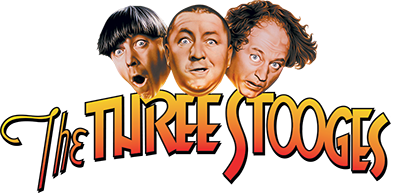Production Information
Title: Baby Sitter Jitters
Studio: Columbia
Short Number: 130
Release Date: February 1, 1951
Running Time: 16:08
“There’s a thousand reasons why I shouldn’t drink… but I can’t think of one right now.”
(Shemp)
Cast & Crew
| Directed by | Jules White |
|---|---|
| Produced by | Jules White |
| Written by | Felix Adler |
| Starring | Moe Howard Larry Fine Shemp Howard Lynn Davis David Windsor Myron Healey Margie Liszt |
| Edited by | Edwin H. Bryant |
Short Take:
In Baby Sitter Jitters, The Three Stooges need to pay the rent so they decide to pay it off by becoming babysitters. Their first job is to sit for a troubled mother who just broke up with her husband. After some of their antics, they fall asleep. The mother comes home and sees that the baby is gone and sends the boys to her ex-husband’s apartment to find her son.
Baby Sitter Jitters Long Take:
There is an old saying in show business: never act with animals or children. The reasoning is sound because audiences by nature tend to find children and animals to be cuter, funnier, and more attractive than the adult star who accompanies them. But an exception to this rule would be when the ‘adult ‘ stars happen to be three imbecilic, childish, and ignorant Stooges who are no more mature than the kid.
In fact, a parallel between their levels of maturity is established right from the outset: the first thing we see the kiddo is playing mindlessly with a gun, and minutes later Shemp mindlessly shoots a strip off of Moe’s scalp.
So who is more childish – Shemp or the child? Not surprisingly, Shemp is throughout the film characterized as child-like: he has the reading skills of a child, sleeps in the crib like a baby, cries at the end of the film, and look who turns Shemp’s infantile tears to laughter – the kid, by standing on his head, the same trick Shemp used to stop the kid from crying earlier. What makes all this even sillier is that Mrs. Lloyd, a ‘normal’ adult, laughs, too, when Shemp stands on his head, a clear sign that this film takes us into a topsy-turvy universe in which the difference between maturity and immaturity seems to depend on which direction your head is pointing.
The Three Stooges – The Perfect Babysitters
The Stooges have babysat before, and the plot is similar to Mutts to You and Sock-A-Bye Baby in that all three films end with the married couple reuniting around The Stooges and the child. But there is a significant difference: in Mutts to You and Sock-A-Bye Baby The Stooges find the child on a stoop; here they are hired and, amazingly, recommended as babysitters. They have studied the subject in Davenport Seats’ book, “How to Become a Baby Sitter,” so they should know what they are doing. But one of the quintessential qualities of being a Stooge is genuinely thinking you know what you are doing even when you do not, and one of the narrative requirements for Stooge films is that someone is negligent enough to hire them to do an important job.
Long before we know how unqualified the Stooges really are, the film opens with the Stooges feeding, diapering, and cuddling three babies. Although Larry is using the window shade to diaper his, this all looks perfectly normal and differs from the openings of several previous films which begin with extended slapstick routines. But then in one of the most extraordinary opening surprises in all of Stoogedom, the Stooges throw their babies to each other, Shemp trips and squashes one, and Moe (“Butt out of this, porcupine!”) hits Larry over the head with his. In a kind of infantile yet symmetrical justice later in the film, the child in their care, more capable than the infants in Mutts to You, Sock-A-Bye Baby, and Three Loan Wolves, bites Larry’s hand, throws a coke bottle at his head, smashes all Three Stooges and his father with a hammer, and then imitates Shemp by standing on his head to make everyone laugh. You see, the old warning was right: never act with animals or children because they always win out in the end.
Visual Humor
Several slapstick routines are particularly well placed in the narrative of Baby Sitter Jitters. Larry begins to shadow box Moe, but Moe ignores him, turns, and kicks Larry through the door across the hall – where they find the kid. In the same scene, Moe kicks Shemp in the rear, and more bubbles come out of his mouth, a reminiscence of the previous scene. Although most of the physical gags are derivative, they are nicely varied.
Shemp’s boxing steps, for instance. are typically intricate, but he interrupts them in the middle of the routine to amuse the child. And, although The Stooges had trouble with a transom in Dutiful but Dumb, Moe gets a surprise punch from this one. Similarly, although Curly shot ink through a keyhole in Healthy, Wealthy and Dumb, Shemp now gets a key in the eye and nostril as he peeks into this keyhole. An excellent variation of this sort of paraclausithuron [‘outside the door’] comedy is Shemp peeking under the door just as the occupant is sweeping dust out the bottom.
Motifs and Routines
Speaking of varying old motifs: Moe uses a handwave for the first time; Moe pounds Shemp and banks Larry to grab them both by their open mouths (Sing a Song of Six Pants); Moe reaches back to bank both of them without looking (a variation on Studio Stoops, Shemp takes a swig of liquor and Moe pounds him in the belly, making Shemp spit it out on Moe (We Want Our Mummy). The best extended slapstick sequence in the film comes after Moe discovers Shemp has stolen silver. A more subtle Shemp moment is when he looks under the crib mattress for the baby. The bubble blowing borrows several motifs from All Gummed Up. Larry puts a nipple on a coke bottle as Curly did with a beer bottle in Sock-a-Bye Baby; this is the first Coca-Cola bottle we have seen, and it is put to two good uses. Other variations: christening Shemp over the head (Pop Goes the Easel); fly paper (So Long, Mr. Chumps); the gun in the child’s mouth (Three Loan Wolves); cutting a diaper (Sock-a-Bye Baby); the tray stuffed in Shemp’s rear (Slaphappy Sleuths); knocking on a head instead of a door (Calling All Curs); shooting off a stripe of Moe’s hair (Disorder in the Court); Moe smashing an apple on Shemp’s forehead (Love at First Bite); Shemp stealing silverware (Hoi Polloi); Larry saluting (“Aye, aye, captain!”) while slapping Moe (Uncivil Warriors); and eating walnut shells and not the ‘stuffing’ (Dizzy Detectives).
Baby Sitter Jitters Trivia
- The correct title of this film has no apostrophe and consists of three words, not two.
- Baby Sitter Jitters was the only Three Stooges short in which actress Lynn Davis appeared. Very little is known about the actress.
- Margie Liszt also appears in The Tooth Will Out, Pest Man Wins, and Income Tax Sappy.
- This is the third consecutive film to omit credit for the Director of Photography. but the first to show the producer/ director credit on a fourth title screen.
- Recent films have not been using wipes; this film contains one.
- A landlady will be a stock character in several subsequent films.
- George Lloyd [Myron Healey] was the actual name of the actor who played in Pardon My Clutch and Crime on Their Hands.
- The Lloyd’s address was the Folger Apartments at 212 Tenth Street’.
Production Notes
Baby Sitters Jitters was filmed over four days on January 23–26, 1950.


